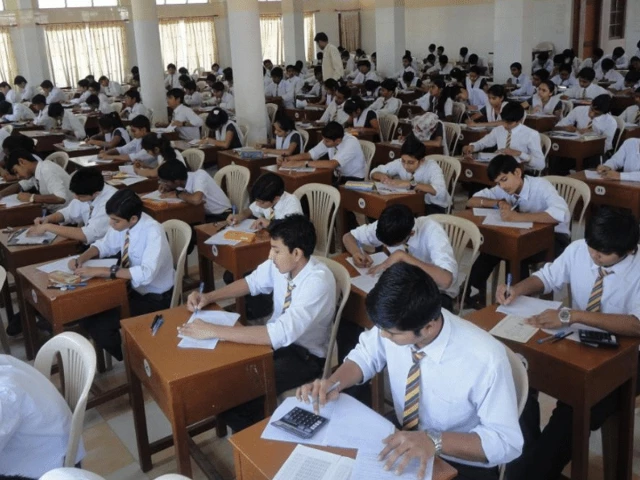The Board Coordination Commission, under the new grading policy, has made an upward change in the pass percentage for intermediate and matric levels from 33% to 40% across the country.
The Commission, the official forum representing all education boards in Pakistan, on Tuesday issued a notification announcing the implementation of a new grading policy, which will take effect in phases from 2026 for registration and intermediate annual examinations.
However, the updated policy excludes grade point average (GPA) and grade point average (CGPA) systems, which were part of the previous proposed framework.
According to the notification, the decision was taken at a meeting of heads of all education boards, held in Karachi last month. The IBCC has now officially informed the implementation schedule.
Talk to NewsIBCC executive director Dr Ghulam Ali Mallah said the change was made after several universities expressed reservations about adopting GPA-based admissions at this stage.
“At the Forum meeting in Karachi, it was observed that many universities are not yet ready to offer admissions on the basis of GPA system. Universities indicated that the new grading policy should be initially implemented without GPA, and the education boards had agreed on this,” Dr Mallah said. “Therefore, the new grading policy will be implemented from 2026 without GPA,” he added.
The IBCC notification also confirmed that the inclusion of GPA in the national grading system has been deferred until further notice.
Ranking under a new system
The new grading model, inspired by the Cambridge assessment structure, will introduce multiple letter grades for high-achieving students.
Previously, students scoring 80-100% received an A1 grade. Under the new system, this range will be divided into four new categories: 96–100%: A++ (extraordinary), 91–95%: A+ (outstanding), 86–90%: A (outstanding), 81–85%: B++ (excellent). Other grades will include B+ (Very Good), B (Good), C+ (Fair Good), C (Above Average), D (Emerging), and U (Ungraded).
The IBCC said the policy will be implemented in grade nine and eleven in 2026, followed by grade ten and twelfth in 2027, ensuring a gradual transition across all education boards in the country.
Fbise also presents a new rating formula
The Federal Board of Intermediate and Secondary Education has also introduced a new grading formula aimed at improving academic standards and aligning Pakistan’s education system with international practices.
According to a notification issued by Development Director Mirza Ali, the new grading system will be implemented for the 2026 matriculation exams, while intermediate students (FA and FSC) will follow the new 2027 structure.
The move follows the directives and decisions of the Inter Board Coordination Commission, which earlier approved a similar national framework for all education boards.
Learn more: Edu Dept proposes to increase the threshold of passing marks
Under the new system, students who score 96–100% will receive an A++ grade, those with 91–95% will get a +, and 86–90% will be graded A. Similarly, 81–85% will be B++, 76–80% will be B+, and 71–75% will be B. Students scoring 61–70% will receive C+, 51 will be graded A++. 60% Being given an (emerging) rating.
Students scoring less than 40% will be designated as “unclassified”. The notification also said that ‘unranked’ students will be allowed to reappear in the exams provided they meet other academic requirements.
Education experts said the new grading system would more accurately reflect student performance and provide fairer assessment opportunities. “The new system is designed to present a more transparent assessment of students’ abilities and align with global standards,” said an educator.
The FBISE said the reform is part of broader efforts to modernize Pakistan’s examination and assessment system, making it more credible and internationally comparable.




